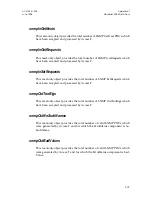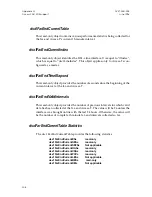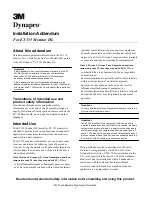
Trap Messages
SNMP trap messages contain the following fields:
•
enterprise
is the same as the sysObjectID (1.3.6.1.4.1.555.1.2) de-
scribed in Appendix F in the section System Group.
•
agent-addr
is the same as the Access-T IP address (ipadEntAddr)
described in Appendix F in the section IP Group.
•
generic-trap
supports the predefined trap types listed in Table H-1.
•
specific-trap
supports the Larscom Access-T alarms listed in the
section Enterprise-Specific Traps.
•
time-stamp
provides the elapsed time between the last reinitializa-
tion of Access-T and the generation of the trap.
Note:
System up time is based on the timestamp when
the unit was powered-up. Since Access-T allows for its
date and time to be user-defined, the system up time
may not be accurate if the date and time values are
changed after power-up.
Enterprise-Specific Traps
When a generic-trap is enterpriseSpecific, the specific-trap field of the trap
message contains a special code to identify the alarm and its status (nor-
mal/alarm). Each code is a 16-bit signed integer with the least significant bit
indicating status (0 = normal, 1 = alarm). Table H-2 lists the alarm codes with
their corresponding text descriptions.
Table H-1. Access-T SNMP Generic Traps
Trap Type
Enterprise
Trap ID
Description
authenticationFailure (4)
SNMP
::=4
Indicates that an erroneous community
name has been received.
enterpriseSpecific (6)
Larscom
::=6
Indicates that some Access-T specific
event or alarm has occurred. The
specific trap field indicates the type of
trap. These traps are described in the
Enterprise-Specific Traps section.
Appendix H
ACST-0351-005
SNMP Trap Support
June 1996
H–2
















































